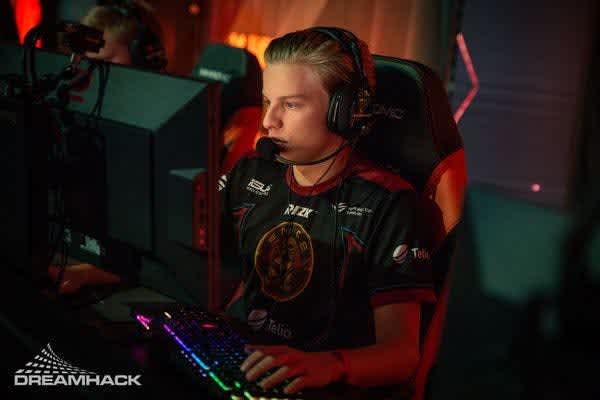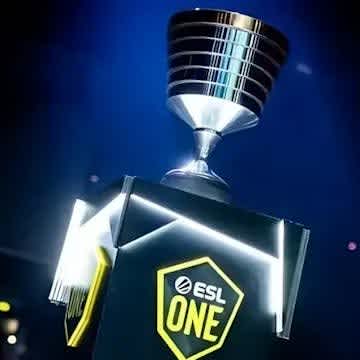EZ PZ: ENCE’s Justified Hype
2018 has had no shortage of hyped European teams looking to break into the parity of tier two Counter-Strike and cement themselves as a legitimate entity. From Space Soldiers winning Dreamhack Austin, to the dogged AGO scoring three series wins over top 10 teams at StarSeries, we’ve seen many contenders for our attention outside the top ten. On top of their sole tournament runs, these teams will boast a name to draw praise, whether it be XANTARES, snatchie or otherwise. With a validating reference point of LAN play, a star to pile hype and responsibility on, and a relatively uncertain field around them, it’s easy to fall into them. As we’ve seen since, doing so for Space Soldiers, or AGO (or Valiance/AVANGAR/even G2 for that matter) can lead to red cheeks.
In-spite of many a team failing to live up to their potential, if there is one side of this criteria who you can feel comfortable placing a degree of faith in, it’s ENCE.
This iteration of ENCE exploded into the communities consciousness after placing top eight at ESL One Cologne 2018, beating multiple top European brands in consecutive Bo3’s before falling to Na`Vi 2:1. Unfortunately though, it seemed that they would follow the trajectory of the many hyped European teams who came before them. At the EU FACEIT London Minor, they were easily handled by both Optic and Ninjas in Pyjamas. For many, their hype quickly faded as they clearly crumbled under the pressure of being expected to qualify for the challengers stage of the minor. Their T-side’s dissolved, with the more veteran hands of NiP and Optic dismantling their executes which had the form, but no sting behind it.
As I outlined in the aftermath of the event though, it wasn’t all doom and gloom despite such a poor showing, for ENCE:
“Play a terrifically textbook style of CS that will sticky the bed-sheets of the most seasoned analyst. But this is all for nought if the horsepower - the engine of the team in aleksib/aerial/xseveN - can’t ignite against the more brutish, scrappy play of lower tiered EU play. This is an unfortunate reality, especially when talking about a team that is built more on structure than individual skill.”

While they failed to show much of anything individually at the minor, their underlying structure and cohesion never went missing. The key for their success, as shown in the contrast of their minor failings and Cologne success was in having their primary T-side players in Aerial/aleksib come alive. Importantly as well, resilience and ability to grind-back on T-side, especially against the scrappier sides would be crucial in enabling their long-term success.
At StarSeries S6, we saw both of these potentially worrying patterns transcended. ENCE won the event, winning two Bo3’s against BIG and Optic, and importantly, a full five-game Bo5 grand final against Vega to claim the trophy. They won on every map in the pool at some point in their run. Sergej was expectantly awarded the MVP, but Aerial was importantly ranked the second highest player on the team. ENCE’s T-side’s showed weak points occasionally, but in-large part found their rhythm against some of Europe’s most dangerous sides. This was especially true against BIG where we saw ENCE able to leverage strong play from aleksib and aerial to shut-out an in-form tabseN through their T-play.
Their structure was more present than ever at StarSeries, especially when contrasted against the looser, most ‘lost’ play of Optic, and at times, Vega. While both sides have well-defined systems, ENCE’s seemed to always be comfortable even on off-maps or when on the back-foot. The only time we saw ENCE crumble was against Vega on Train in the finals where mid-round heroics from tonyblack continually put ENCE in tough positions. Other than that, for the large part the Fins either found themselves grinding rounds or easily closing games with a large lead.
In the grand finals, while it went the full five maps, it never seemed as though ENCE had lost control. Very easily had a couple of things gone their way, ENCE could’ve 3:0’d Vega, but even looking at the base of the five-game mountain, they never really lost their composure. Stylistically, Vega is a team that could break ENCE should the momentum swing their way, as Optic and NiP had done before. The intensely aggressive AWPing of jR though, was easily subdued by the countering, more positional play of allu. As the kill matrix shows, jR killed allu 4 times, while allu killed jR 17 times with the AWP. Sergej never looked totally out of place in the series, and game after game pulled ENCE out of holes. This was most notably done on Dust II in a crucial round where he 1v2 clutches to essentially give ENCE the platform to close the series and pivotal third map.
Overall, ENCE showed at StarSeries a validating performance. They managed to fix, or at least, hide the issues that attracted justified criticism at the minor while maintaining their unique, and very promising win conditions from Cologne. Lifting the trophy in Kiev may have been by virtue of a lack of top teams in-attendance, but their place on international stages in-general seems to be something we’ll see more of down the line. Their next tournament is EPICENTRE which is far more of a traditional 250k+ LAN affair. It’s tough to see how they’ll match-up against a well rested top eight opponent, but their map pool and momentum is strong enough to at least make it interesting. Their presence at big events won’t guarantee playoffs, but it’ll surely make life not-so EZ for their opponents.





